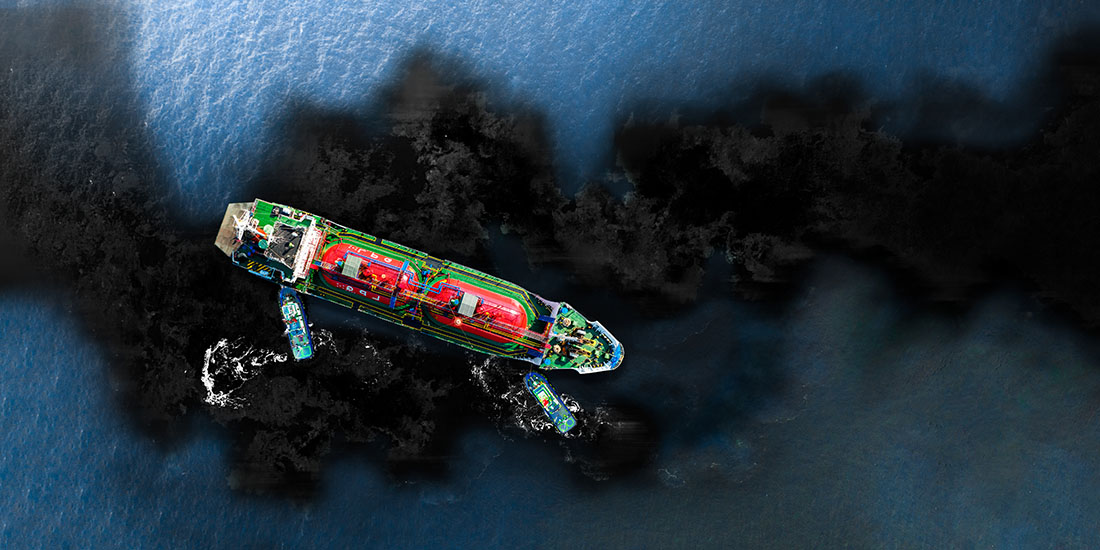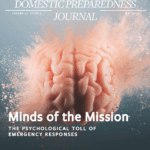On October 1, 2021, San Pedro Bay Pipeline controllers detected a series of alarms warning of a potential leak in their underwater pipeline, approximately five nautical miles off the coast of Huntington Beach, California. Over the next 13 hours, they conducted seven shutdowns and restarts to diagnose the issue. On October 2, two hours after the pipeline was shut down for the eighth and final time, a pipeline contractor vessel crew confirmed a crude oil spill. The pipeline operator Beta Offshore initiated a response to contain the spill. Meanwhile, approximately 588 barrels of oil leaked into the water, with a total damage estimate, including cleanup efforts, at $160 million.
The National Transportation Safety Board and the Pipeline and Hazardous Materials Safety Administration found that Beta Offshore’s control room employees had not been adequately trained to monitor and respond to leak detection system alerts.
In another incident that occurred on November 22, 2022, Andre Bing, a supervisor, shot and killed six coworkers at Walmart in Chesapeake, Virginia. The assailant left behind a “death note” on his phone that apologized for what he was about to do while simultaneously blaming others for mocking him. “Sorry, everyone, but I did not plan this. I promise things just fell in place like I was led by Satan.”
Bing claimed he was “harassed by idiots with low intelligence and a lack of wisdom.” Bing died at the scene of an apparent self-inflicted gunshot wound. Coworkers of Bing who survived the attack said he was difficult and known for being hostile to employees. One survivor said Bing seemed to target some victims even after they appeared to be dead, said a witness who was present when the attack began.
Many incidents, emergencies, and disasters like these, which result from human actions, share a common contributing factor toward their size, scope, and ultimate impact. A lack of psychological safety makes it difficult or, in some cases, impossible for those close to an incident to speak freely about concerns or mitigation strategies.
Contributors to Psychosocial Hazards
There is never a single contributor to what is described as a “human-caused” incident, emergency, or disaster, but rather a complex web of contributing factors. Factors generally considered causal to disasters—such as negligence, intentional actions, or societal, organizational, and systemic factors—can be be more psychosocial than physical. While focus tends to be on the physical harm caused by human actions, there is too little focus on the psychosocial risks contributing to incidents described in after-action and media reports. Human error may be identified as a contributing factor in a disaster, but the cause of human error is often unaddressed, unidentified psychosocial hazards.
Psychosocial hazards include factors (in the workplace) that are perceived or experienced as threatening to the extent that they cause the person exposed to alter their behavior. In 2021, the International Organization for Standardization released a psychological health and safety guidance standard. The standard (ISO 45003) identifies several psychosocial hazards, including “lack of information/training to support work performance” and “repeated (more than once) unreasonable behaviors which can present a risk to health, safety, and well-being at work.”
In the case of the San Pedro Pipeline incident, the lack of information and training to support pipeline controllers was undoubtedly a contributing factor to the severity of the leak. This lack of training delayed the shutdown and isolation of the pipeline, allowing crude oil to continue leaking into the ocean. Beta Offshore employees ignored multiple leak detection alarms that signaled a problem with the pipeline. Instead of halting operations at the first alarm, control room workers repeatedly opened and closed shipping pumps without shutting any pipeline valves, which worsened the rupture and increased environmental damage. Investigators also determined that better training could have helped controllers recognize abnormal operating conditions and respond more effectively to prevent the spill. At the very least, this lack of training—internationally recognized as a psychosocial hazard—allowed an otherwise routine incident to progress into an emergency and, ultimately, a disaster.
In the case of the Walmart incident, the attacker not only complained of bullying and harassment, but his coworkers observed behaviors that could and likely should have been identified as indicators of diminished mental health and potentially diagnosable mental illness, which does not appear to have been addressed. While there were likely other contributors, it is hard to argue that either of these incidents would have otherwise occurred or escalated into emergencies that threatened life or property without the presence of psychosocial factors.
The psychosocial hazards in these two situations do not suggest any specific deficiencies in those involved but rather that the systems in which people found themselves all dictated the eventual outcomes. These incidents are products of the organizations’ decisions—for example, not to address bullying—well before the incidents occurred. Their subsequent investigations suggest that non-physical factors contributed to the outcomes in both cases.
Another challenge when considering non-physical contributors to incidents, emergencies, and disasters is the tendency to attribute them to behaviors of individuals in systems and cultures as opposed to the cultures and systems themselves. This tendency is reinforced by a virtual labyrinth of unfavorable consequences for those who identify flaws in how systems function instead of how they are imagined they would function.
A Safe Workplace
A just culture is “an atmosphere of trust in which people are encouraged, even rewarded, for providing essential, safety-related information, but in which they are also clear about where the line must be drawn between acceptable and unacceptable behavior.” This is in contrast to “blame culture,” which places blame on the individual, regardless of inherent flaws in the system, or “no-blame” culture, which places all blame on the system, regardless of the individual’s actions. Achieving a culture of psychological health and safety requires well-designed systems and self-aware individuals. Systems should be able to identify, assess, and mitigate psychosocial hazards. In addition, individuals should understand their psychological triggers and recognize that others have theirs. They should be committed to speaking up when a just culture is lacking.
Not only are psychosocial hazards contributors to an incident, but they can also manifest afterward in the form of poor psychological safety, diminished mental health, and issues like anxiety, depression, and burnout. Additionally, prolonged exposure can have physical consequences like cardiovascular disease and musculoskeletal disorders.
Human-caused disasters can be mitigated by monitoring the psychosocial environment to prevent physical incidents, emergencies, or disasters. When safety and emergency management professionals are addressing all of the phases of an emergency, they should consider the impact of psychosocial as well as physical hazards.
- During the prevention phase, identify barriers to a psychologically safe environment. The identification process is best handled by surveying and inquiring about individuals in an organization.
- Once identified, psychosocial hazards that can be mitigated should be addressed effectively and efficiently.
- Since no environment is free of psychosocial hazards, prepare leaders within an organization for psychosocial risks.
- Organizations need systems by which to respond to exposure to psychosocial hazards and risks. Response should be based on the exposure’s severity, frequency, and duration. It can be as simple as reacting to a worker’s experience of loss outside of work or providing immediate counseling in cases where there is traumatic exposure.
- In the aftermath of an incident, emergency, or disaster, recovery should be focused on the physical infrastructure of an organization or community but also the psychological infrastructure.
The bottom line is to include an analysis of potential psychological and emotional harm while assessing physical hazards. The two are interrelated and interconnected. However, addressing psychosocial hazards can minimize the possibility of physical harm.

I. David Daniels
I. David Daniels, Ph.D., is an occupational health and safety professional, thought leader, and founder/CEO of ID2 Solutions, LLC. He hosts the Psych Health and Safety USA podcast and is the author of the new book Psychosocial Hazards Are Real! Daniels has a Ph.D. in occupational health and safety and a master’s in human resource management. He is certified as a safety director, emergency management specialist, and violence prevention specialist, and he holds a certificate in diversity, equity, and inclusion from Cornell University and in professional practice for psychological health and safety. Dr. Daniels is the founding chair of the Safety and Security Industry Workgroup of the National Association of Black Compliance and Risk Management Professionals. He is a board member of the Society for Total Worker Health™, the Canadian Association of Black Health and Safety Professionals, and the personal protective equipment advocacy organization The Safety Rack.
- I. David Danielshttps://domprep.com/author/i-david-daniels






